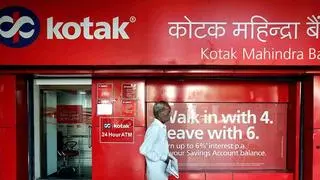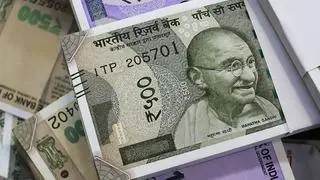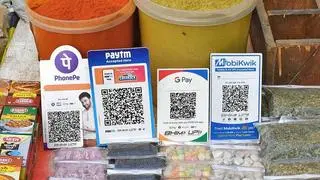Post Lehman fall, the exchange rate of the Indian rupee (INR) depreciated by 19 per cent to Rs 51.25 in March 2009 from Rs 43.02 in August 2008 against the US dollar ($). Consequent to this development, the RBI resumed aggressive selling of dollar - it sold $18.67 billion in the month of October 2008 alone and continued its selling till March 2009. During the period October 2008 to March 2009, it sold totally $25.27 billion in the open market at exchange rates varying from Rs 49.78 to Rs 52.61.
The RBI was equipped to deal with severe depreciation of INR post-Lehman fall as it bought a record $ 78.203 billion from the open market at an average price of Rs 39.90/dollar during the financial year 2007-08 — it spent a whopping Rs 3.12 lakh crore to buy these dollars in FY2007-08.
In FY2009, the RBI sold overall $34.922 billion at an average price of Rs 51.14/dollar and made a profit of about Rs 38,000 crore based on its average purchase price of Rs 39.90/dollar in the previous financial year! Consequent to these successful transactions, the RBI transferred over Rs 25,000 crore to the Central Government in FY2009 as compared with about Rs 15,000 crore in FY2008.
The RBI continued selling dollar in FY2010 but in smaller volume – it sold another $2.505 billion in FY2010 and finally INR stabilised around Rs 45.50 against the US dollar by March 2010. Since then the stability in INR continued till August 2011 against the US dollar, trading at average rate of Rs 45.36. But the so-called risk aversion has brought down the value of INR in the current month – the exchange rate of INR is down by about 9 per cent to Rs 49.40 against the US dollar in September 2011 alone.
One should give credit to the RBI for making two most impressive transactions in the recent past – in FY 2008, it bought $78 billion of dollars at the cheapest exchange rate and in November 2009 bought about 200 tonne of gold worth $6.70 billion when the gold price was hovering around $1,060 per ounce.
While the RBI is sitting on 60 per cent potential gain – about $4 billion – from its last gold purchase, it is equally well positioned this time as well to tackle instability in the exchange rate of INR. After INR stabilised around Rs 45.12 by December 2010, the RBI did not intervene in the currency market during the period December 2010 to July 2011. Hence, the RBI is left with over $42 billion worth of the US dollar out of $78.203 billion which were purchased at average price of Rs 39.90 in FY 2008. It can play a positive role in supporting rupee whenever it breaches the Rs 50 mark against the dollar – while supporting the INR it can also potentially gain about Rs 42,000 crore by selling these dollars which were purchased at most attractive rate in FY 2008!
(The author is Group CIO, Centrum. Views expressed in this article are personal)







Comments
Comments have to be in English, and in full sentences. They cannot be abusive or personal. Please abide by our community guidelines for posting your comments.
We have migrated to a new commenting platform. If you are already a registered user of TheHindu Businessline and logged in, you may continue to engage with our articles. If you do not have an account please register and login to post comments. Users can access their older comments by logging into their accounts on Vuukle.